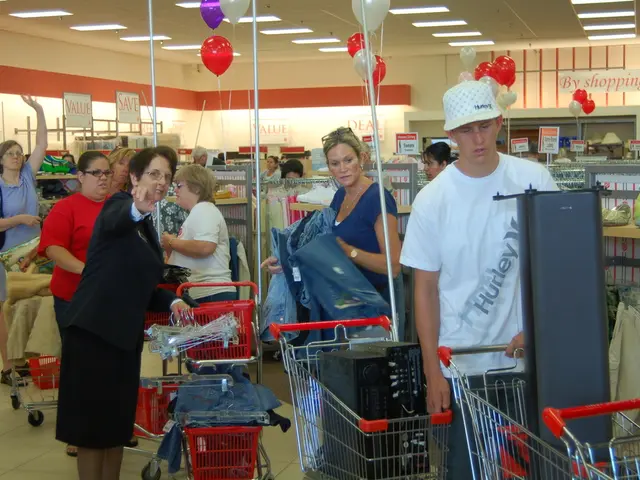Unveiled: The Holiday Crisis Revealed by The Supply Chain SleuthTM
In the lead-up to its first holiday season as a retail company, a significant challenge arose: the implementation of a new Warehouse Management System (WMS) and Pick-to-Light (PTL) system. Despite a $20 million plus investment, the company faced numerous supply chain issues that nearly crippled the business.
The complexities and tailoring needs of the new WMS were a major factor. The system required extensive modification and tuning to support various picking and packaging methods, customer types, and product handling scenarios. If not optimized before the peak season, these customizations could lead to operational delays and errors.
Holiday seasons typically bring large surges in order volumes, which strain warehouse operations. The challenge was compounded when order sizes ranged widely, from individual items to tens of thousands of finished products, complicating picking strategies and resource allocation.
Labor shortages and workforce readiness also played a role. Tight labor markets and a lack of skilled operators negatively impacted the proper use and ramp-up of new technology like WMS and PTL systems. Insufficient training and workforce experience led to slower adaptation, inconsistencies, and downtime.
Handling a vast assortment of SKUs, especially with small components and complex sets, increased the difficulty of maintaining accurate inventory and efficient picking, further stressed during high-demand periods.
Resistance among warehouse staff towards new tools like PTL systems reduced initial efficiency. Picker involvement in pilot phases and training was critical but may have been insufficient in the early stages.
Balancing picking with replenishment was another issue. Without proper scheduling and buffer zones, replenishment activities interfered with peak picking, reducing throughput and increasing delays during the holiday rush.
Supply delays and spare parts availability also caused problems. Long lead times and insufficient spare parts for new equipment led to extended downtime for key systems if breakdowns occurred, cascading into order fulfillment delays.
The company's Supply Chain team's paradigm was limited, and they failed to think outside of the box. They designed the new system to handle historically rectangular books, making handling a diverse set of new items more difficult. The team automated and perpetuated the exact same process, assuming it would be good enough to handle anything.
The main challenge was the cutover to the new WMS in the Distribution Centre. Every single case was stored, moved to PTL, opened, some items were removed, and the rest of the case was routed back to a storage shelf. This extra handling, costs, and productivity impacts were overwhelming, crippling, and almost killed the company.
Operating cost, response time, and speed of delivery would have improved dramatically if they had handled items in full case quantities. Records storage, maintenance, and other non-production type items were moved out of the warehouse to free up more space.
By the end of August, the Distribution Centre (DC) was already complaining about running out of storage space. The company was diversifying its offering, adding a complex portfolio of department store type items. A local company with extra warehouse capacity was found to store some of the goods.
The DC manager, architect of the new system, and the head of the Distribution Centre resigned before the system cutover. The CEO did not know what was going on, as the company was preparing for its first Holiday season in Retail.
References:
- https://www. supplychaindigital.com/logistics/warehouse-operations/warehouse-management-systems-wms-for-holiday-season
- https://www.dcvelocity.com/articles/201606/preparing-for-the-holiday-rush-wms-and-automation-key-to-success.html
- https://www.dcvelocity.com/articles/201611/wms-and-automation-key-to-holiday-success-part-2.html
- https://www.dcvelocity.com/articles/201608/wms-and-automation-key-to-holiday-success-part-1.html
- https://www.dcvelocity.com/articles/201612/holiday-season-lessons-learned-from-wms-and-automation.html
- The company's supply chain strategy focused on optimizing the new Warehouse Management System (WMS) and Pick-to-Light (PTL) system, but an abundance of module customizations and tailoring needs caused operational delays and errors during the peak season.
- With the holiday season bringing large surges in orders, ranging from single items to tens of thousands of finished products, the procurement team struggled to efficiently manage distribution, resource allocation, and picking strategies.
- In the lead-up to the holiday season, the company recognized that supply chain finance was a significant concern, as labor shortages, inadequate training, and workforce readiness challenges affected the proper use and performance of new technology like WMS and PTL systems.








